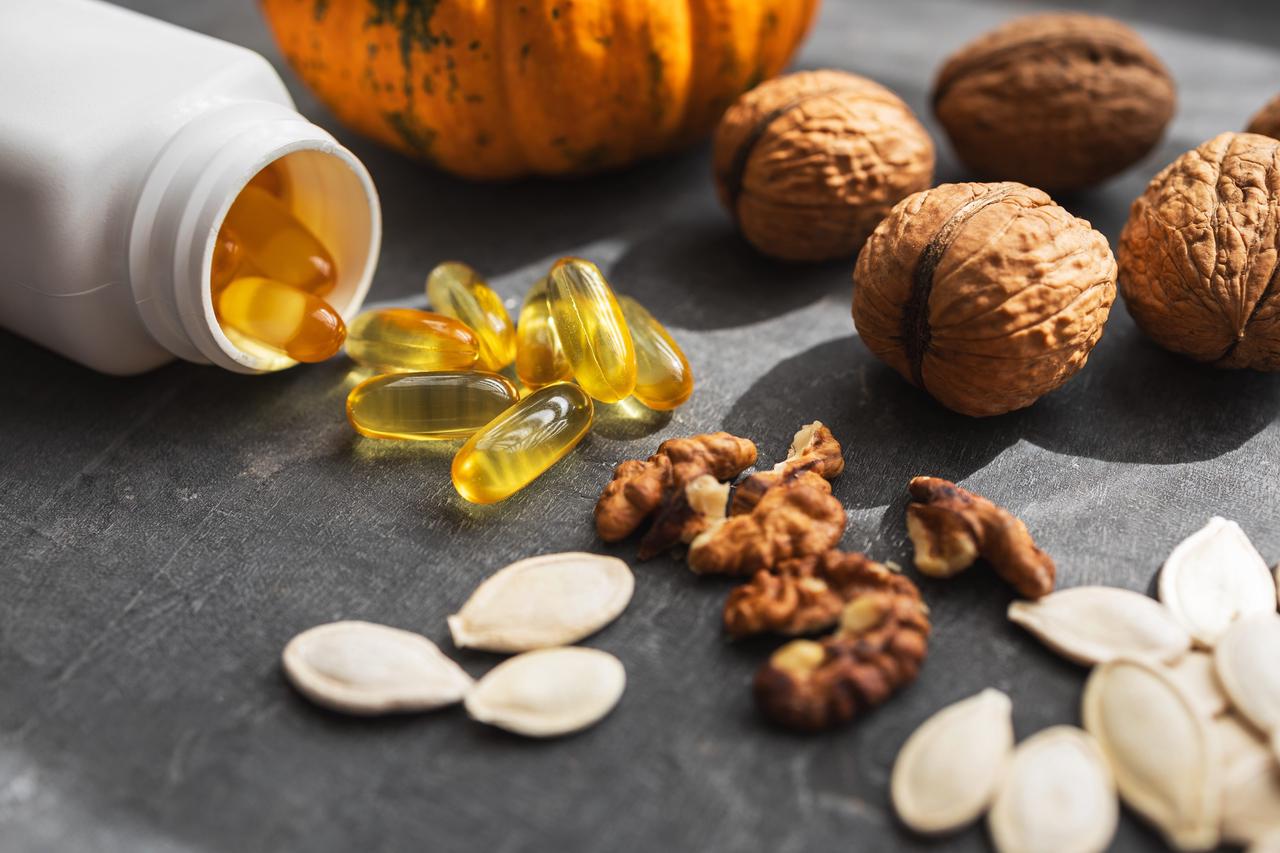
Omega-3 Powerhouses: Delicious Anti-Inflammatory Foods You’ll Want to Eat Every Day
Inflammation is a buzzword these days, often villainized for causing fatigue, bloating, joint pain, and even skin flare-ups. But what if you could tackle inflammation simply by changing what’s on your plate? Enter omega-3s, the super fats known for their anti-inflammatory benefits. This isn’t your typical list of foods—let’s take a deeper dive into why these omega-3 foods are your best ally against inflammation and how to enjoy them daily.

The Omega-3 Superpowers 🦸♂️
Before we dive into the delicious details, what makes omega-3s so special for inflammation? These fatty acids—particularly EPA and DHA—play a crucial role in regulating inflammation throughout the body. When we consume omega-3-rich foods, they compete with omega-6 fatty acids (which can promote inflammation) to reduce inflammatory responses. Omega-3s are essential because our bodies can’t produce them on their own, so they must come from food.
Think of omega-3s as the “superheroes” of the dietary world, swooping in to neutralize inflammation and promote overall wellness. Now, let’s meet the heroes!
Salmon: The Omega-3 Superstar 🐟
Salmon is the poster child of omega-3-rich foods—and for good reason. A single serving of salmon packs in a day’s worth of EPA and DHA, the omega-3s most effective at reducing inflammation.
Why It’s a Star: Salmon contains more than just omega-3s. It’s also rich in antioxidants like astaxanthin, which complements omega-3s by reducing oxidative stress—a known trigger of inflammation. Studies show that eating fatty fish like salmon just twice a week can reduce inflammation markers and may even help improve heart health.
How to Enjoy It: Grill it with a squeeze of lemon, bake it with a dash of garlic and herbs, or make a salmon salad with leafy greens and a drizzle of olive oil. For a twist, try smoked salmon with avocado on whole-grain toast for a delicious, anti-inflammatory breakfast.
Chia Seeds: Tiny but Mighty 🌱
Don’t let their size fool you—chia seeds pack a big omega-3 punch! These little seeds are one of the best plant-based sources of ALA (alpha-linolenic acid), an omega-3 that the body partially converts to anti-inflammatory EPA.
Why They’re a Star: Beyond omega-3s, chia seeds are high in fiber and antioxidants, helping to regulate blood sugar levels and reduce inflammation. Their gel-like texture when soaked in water also promotes satiety, making them great for weight management.
How to Enjoy Them: Stir chia seeds into your smoothie, make chia pudding by soaking them in almond milk overnight, or sprinkle them over your oatmeal. For a creative twist, try adding them to homemade energy balls with oats and dried fruit.
Walnuts: Nature’s Anti-Inflammatory Nuts 🥜
Walnuts are the only nuts with a significant amount of omega-3s, making them a unique anti-inflammatory snack. They’re also high in polyphenols, antioxidants that can further reduce inflammation.
Why They’re a Star: The combination of ALA omega-3s and antioxidants makes walnuts a dual-action anti-inflammatory food. Research shows that regular walnut consumption can decrease levels of inflammatory markers, particularly in people with metabolic syndrome.
How to Enjoy Them: Keep it simple with a handful of walnuts as a snack, toss them into salads for a satisfying crunch, or add them to your morning yogurt. For an anti-inflammatory dessert, try baking walnut-studded banana bread with a dash of cinnamon.
Flaxseeds: A Fiber and Omega-3 Duo 💪
Flaxseeds are another fantastic plant-based source of ALA omega-3s, but they come with a bonus: they’re rich in fiber, which supports digestive health and reduces inflammation in the gut.
Why They’re a Star: When ground, flaxseeds release their omega-3s and fiber, helping your body absorb these anti-inflammatory compounds more effectively. Studies show that flaxseeds can help reduce levels of C-reactive protein, a marker of inflammation.
How to Enjoy Them: Add ground flaxseeds to smoothies, sprinkle them over oatmeal, or mix them into pancake batter. For a fiber boost, use flaxseeds as an egg substitute in baking: just mix one tablespoon of ground flaxseed with three tablespoons of water and let it sit for a few minutes.
Sardines: The Underappreciated Omega-3 Source 🐟
Sardines may not win a popularity contest, but when it comes to omega-3s, they’re a top contender. These small fish are not only high in EPA and DHA, but they’re also an excellent source of calcium and vitamin D, which support bone health.
Why They’re a Star: Sardines are low on the food chain, meaning they contain lower levels of mercury than larger fish like tuna. Their high omega-3 content helps reduce inflammation, while the calcium and vitamin D combo makes them a perfect choice for healthy aging.
How to Enjoy Them: Sardines on whole-grain crackers make an easy, protein-packed snack. Add them to pasta with fresh tomatoes and basil for an anti-inflammatory Mediterranean meal. Or, try grilling them with a sprinkle of lemon and parsley.
Brussels Sprouts: Omega-3s in Your Greens 🌿
Surprisingly, some vegetables contain omega-3s too! Brussels sprouts are one of the few veggies with ALA, making them a great addition to an anti-inflammatory diet. Plus, they’re rich in vitamin C and fiber, both of which contribute to reduced inflammation.
Why They’re a Star: Brussels sprouts contain antioxidants like kaempferol, which helps combat oxidative stress. This one-two punch of ALA and antioxidants makes them a powerful anti-inflammatory food.
How to Enjoy Them: Roast Brussels sprouts with a drizzle of olive oil and a sprinkle of sea salt for a delicious side dish. You can also shred them raw into a salad with walnuts and a lemon vinaigrette for extra omega-3s.
Putting It All Together: A Day of Anti-Inflammatory Eating 🌞
Incorporating these omega-3 foods into your daily diet doesn’t have to be complicated. Here’s a simple day of meals to help you get started:
- Breakfast: Chia pudding with almond milk, topped with berries and a sprinkle of walnuts
- Lunch: Grilled salmon salad with leafy greens, sliced avocado, and roasted Brussels sprouts
- Afternoon Snack: A handful of walnuts or a serving of sardines on whole-grain crackers
- Dinner: Whole-grain pasta tossed with olive oil, cherry tomatoes, and sardines (or your favorite omega-3-rich fish)
- Dessert: Banana flaxseed smoothie for a refreshing, omega-3 finish
Final Thoughts: Eating for a Happier, Healthier Body 🎉
Omega-3s don’t just support heart health—they’re also your body’s natural defense against chronic inflammation. Incorporating more of these foods into your diet is an enjoyable way to invest in your long-term health. Whether you’re tossing chia seeds into your breakfast, munching on walnuts, or adding a side of Brussels sprouts, every bite counts in the journey toward a stronger, inflammation-free you.
So next time you’re planning your grocery list, don’t just reach for the usual staples. Let these omega-3 superfoods become a delicious, nourishing part of your daily routine!
References
1. Calder, P. C. (2015). Marine omega-3 fatty acids and inflammatory processes. Biochimica et Biophysica Acta, 1851(4), 469–484.
2. Mozaffarian, D., & Wu, J. H. (2011). Omega-3 fatty acids and cardiovascular disease. Journal of the American College of Cardiology, 58(20), 2047-2067.
3. Ros, E., & Hu, F. B. (2013). Consumption of plant seeds and cardiovascular health. Circulation, 128(5), 553–565.
4. Prasad, K. (2009). Flaxseed and cardiovascular health. Journal of Cardiovascular Pharmacology, 54(5), 369–377.
Meet Fitnexa, your AI-driven companion that turns everyday habits into a positive, uplifting journey. From effortless meal analysis (including recipe suggestions) to personalized coaching and real-time support, Fitnexa keeps you on track toward lasting wellness — so you can stay younger, live longer.
https://apple.co/4hr8JGW





Leave a comment
This site is protected by hCaptcha and the hCaptcha Privacy Policy and Terms of Service apply.